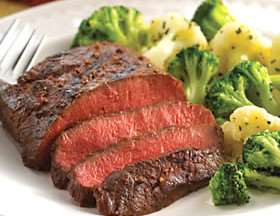
China will offer the Trump administration better market access for financial sector investments and U.S. beef exports to help avert a trade war, the Financial Times reported on Sunday, citing officials familiar with the matter.
China is prepared to raise the investment ceiling in the Bilateral Investment treaty and is also willing to end the ban on U.S. beef imports, the newspaper also reported.
"China was prepared to (raise the investment ceilings) in the BIT but those negotiations were put on hold (after Trump's election victory)," the Financial Times also reported citing a Chinese official involved in the talks.
Allendale tweeted this morning that "China already had lifted their ban on US Beef back in September of last year. Again, there is no ban on US Beef." The Radio Oklahoma Ag Network reported last September on the announcement that Allendale refers to- and we talked with Phil Seng about the word from China at that time- click here for that Beef Buzz of last September.
According to Meatingplace, "The opportunity for U.S. beef exporters could be significant. Global AgriTrends calculates the greater China region (China, Hong Kong, Vietnam) as a $7 billion market, according to Stephens Inc. analyst Farha Aslam.